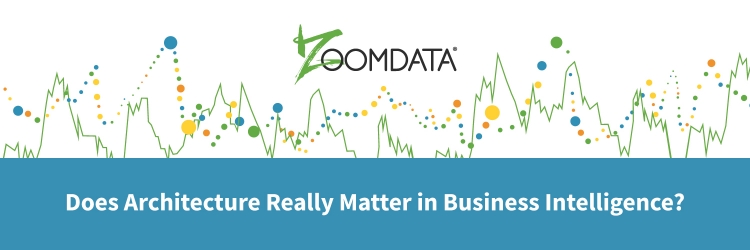In short, yes. In this blog series about Zoomdata’s architecture, we’re going to explain why, while we take a deep dive into what makes Zoomdata’s architecture tick.
You see, as data platforms, artificial intelligence (AI), machine learning (ML), and programming platforms have evolved to leverage big data and streaming data, the front-end user experience hasn’t kept up. This is partly because a lot of traditional BI platforms have actually been successful. The best of them are “sticky” in organizations because they perform well with traditional relational databases. And, let’s face it, until recently, relational databases and SQL were pretty much all most organizations needed.
So while it's true that some of these old-school BI platforms have been trusted and loved by users for many years, they weren’t built for modern data or modern data architectures. Holding onto old BI technology while everything else moves forward is holding organizations back. We believe new data on new technology can help drive business growth and performance.
This blog series will introduce you to how Zoomdata was built from the ground up to accelerate user insights when working with massive, near real-time, and modern data platforms. Organizations can use combinations of big data, streaming data, and cloud and on-prem data to innovate and find solutions to intractable problems.
Some Guiding Principles to Keep in Mind
Zoomdata development is guided by several key principles. You’ll see one or more of the following behind each feature and capability:
- Adaptability and extensibility
Zoomdata’s architecture can adapt to work with a wide variety of modern data platforms. Its microservices architecture was designed to allow data connectivity to run independently of the Query Engine, and components can even be swapped out if something better comes along to improve performance or functionality. The Zoomdata user experience can also be customized, embedded into business processes, and further extended using the Zoomdata JavaScript client, Custom Chart CLI, and REST APIs.
-
Treating data as streams, not batches or sets
Treating all data as streams, rather than batches or sets, is fundamentally different from how traditional BI works. Zoomdata’s unique point of view that data can be represented in streams is baked into the web application, Query Engine, and Smart Data Connectors.
-
Developing for people
Above all, it’s important to recognize that Zoomdata is purpose-built for visual exploration, responsiveness, and user independence. Zoomdata is about delivering an interactive and high-touch data experience for the broadest range of users in any organization, not just the data jockeys, SQL experts, markup language aficionados, or Python programmers. To experience this yourself, sign up for a demo.
Now you know where we’re going. Our next post will introduce microservices. It’s a big topic, so we’ll break it into several posts. We hope you enjoy the journey -- and please let us know if you have any questions.
